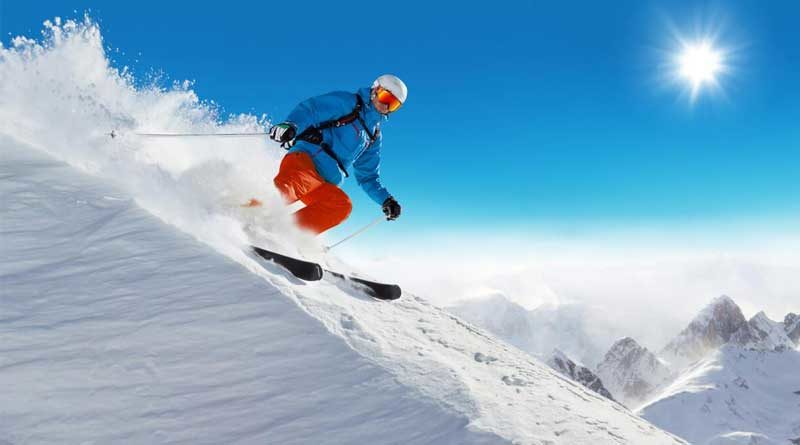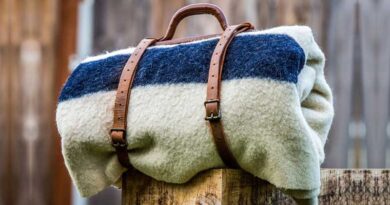What to Wear Under a Ski Jacket?
When you’re getting ready to go out skiing or snowboarding and you’re considering what you’re going to wear under your ski jacket, this article is for you. Three layers are important to wear in your body for skiing i.e. a base layer, a mid-layer, and your ski jacket.
Base Layer
A base layer or a next-to-skin piece is a fabric that helps wick moisture away from your body. When you’re picking out your base layer, it’s important to consider temperature. If it’s warm out, pick out something thin and polyester. This will help keep you nice and cool throughout the day. If it’s cold out, get a little bit thicker base layer such as merino wool and it will keep you warm all day. Do not pick out cotton. When cotton gets wet, it gets cold and becomes uncomfortable.
Insulation or Mid-Layers
The second layer or layers are going to be insulation layers or mid-layers over top of your base layer. It is an outer layer and it is often water-resistant which will help protect you from the elements including the wind throughout the day. I like something that zips up and comes up high on my neck that keeps me a little bit warmer. This will do the best job of insulating and keeping your core temperatures warm throughout the day. You can also have a couple of mid-layers such as a combination of fleece and synthetic layers. This combination is effective and will keep you nice and comfortable.
Ski Jacket
Running cold when you’re out skiing? Go for a big thick insulated ski jacket. When choosing a ski jacket, always look for something that’s both windproof and waterproof. Gore-Tex jackets perform very well. If you don’t have something like this, this is okay to use a good raincoat something that’s just going to keep the snow off or keep you dry throughout the day.
What to Look for in a Ski Jacket?
Whether you’re a skier or a snowboarder, finding the right ski jacket is key to a successful day on the slopes. Factors you need to consider include weather conditions, your level of ability, your budget, and your personal preferences like style, fit, and color. There are plenty of styles to choose from and in this guide, I hope to explain some of the technical terms used and features that most ski jackets have.
Most ski jackets are made with either waterproof or water-resistant snowproof fabric. A jacket can only be called waterproof if it’s made with a waterproof membrane, waterproof fabric, and taped seams. The higher the ratings (measured in millimeters) the more waterproof the fabric. A water-resistant snowproof jacket would have been treated with durable water repellent, which is referred to as DWR. It allows water or rain to roll off the surface of the jackets. This offers protection in light snowfall but may not be suitable for heavy rain or blizzard. If you plan to fall in the snow a lot, you may like to consider a waterproof option. If the weather conditions are favorable, a water-resistant ski jacket will do the job as a good cheaper option.
Whilst breathability isn’t essential in a ski jacket, a breathable jacket allows perspiration to escape, which is excellent for active skiers and snowboarders as it stops you from feeling damp and cold when you stop exercising. A breathable ski jacket is made with a waterproof membrane in the fabric, which allows water vapor molecules to escape while stopping water coming in from outside. Ventilation zips and mesh lining can also aid in breathability. Remember, you’ll want to be wearing a highly breathable base layer and mid-layer so nothing cotton for the breathable jacket to work.
Conclusion
What to wear under a ski jacket depends on what type of ski or snowboard you are and how much you feel the heat or the cold for cross-country skiing. You’ll need a softshell jacket with high breathability and should avoid insulated ski jackets. Use layers instead or you’ll be too warm. If you lay your clothes properly, an unpadded shell ski jacket could be a useful final layer. The outer shell will keep you dry and some are windproof too. These jackets tend to be cheaper than insulator ski jackets so the smart layering system could be better valued.
Carry something for rest stops or emergencies as a lightweight puffer fleece or down jacket. Down jackets are usually made with at least 50 percent natural goose or duck down. In super cold conditions, they’ll heat you quickly and keep you warm. But if you start to get active, you may need a jacket that will release the moisture and keep you cool. Also, down jackets don’t perform well in wet conditions. They do take a long time to dry out. A synthetically insulated ski jacket is a man-made version of down, and they mimic its warming and insulating effects. In this case, the fabric is waterproof, breathable, and less bulky. But it will lose heat faster than an actual down jacket.




